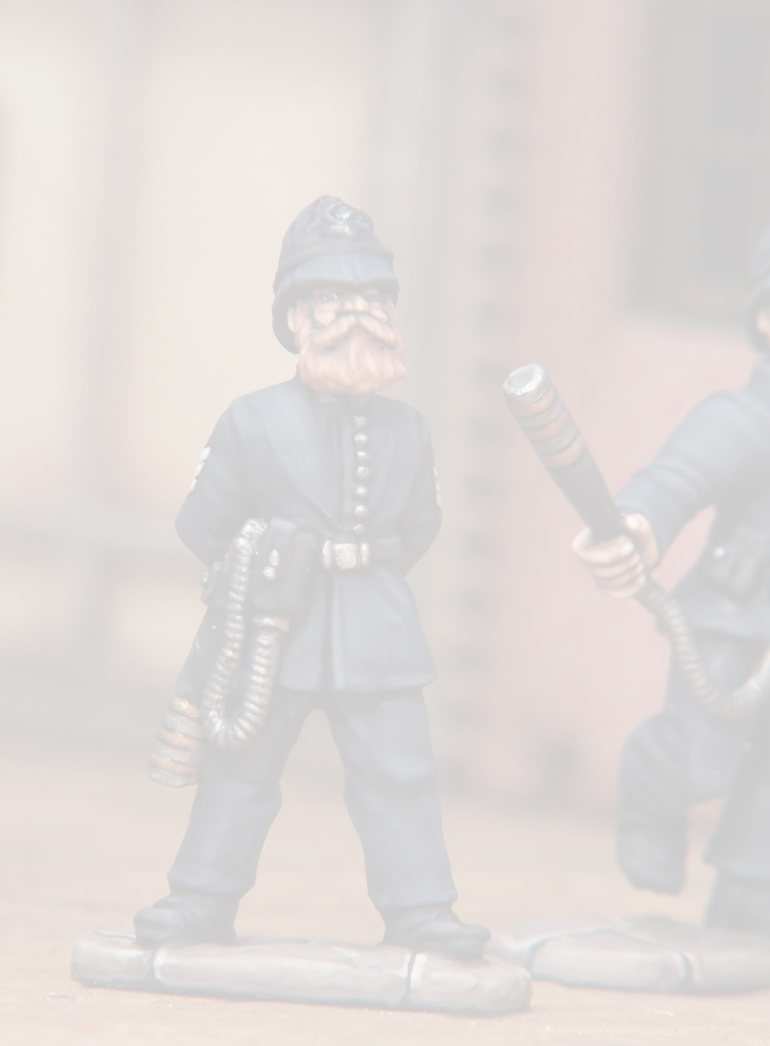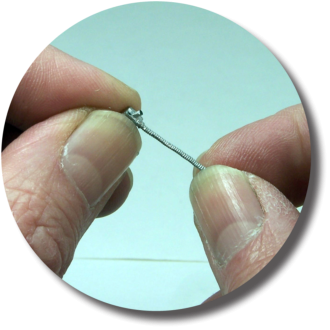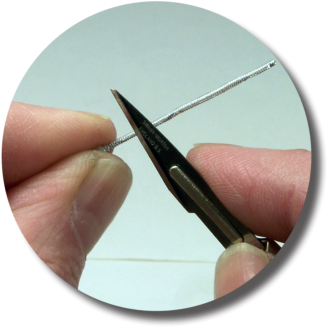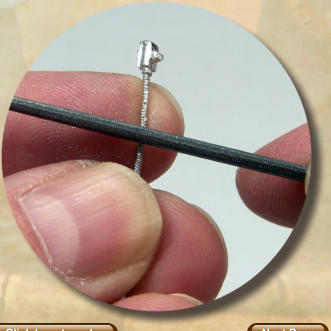

Above. Carefully straighten the cable
Above. Carefully scrape along the cable with your knife.
Below. While you have your knife out, you can clean up
the Constable too.



















the length of the cable, across the ribbing detail. This can be removed carefully scraping along the cable with
can be removed carefully scraping along the cable with your knife, allowing the blade to lightly dig into the
your knife, allowing the blade to lightly dig into the surface detail, enough to remove the mould line, but not
surface detail, enough to remove the mould line, but not enough to cut deeply into or through the cable. This is
enough to cut deeply into or through the cable. This is not easy, but with a bit of practice it can be done.
not easy, but with a bit of practice it can be done. Fortunately the cables are all over long so I would
Fortunately the cables are all over long so I would recommend practising on the end of the cable furthest
recommend practising on the end of the cable furthest away from the power pack, so if you do accidentally
away from the power pack, so if you do accidentally chop through the cable it won’t be disastrous.
chop through the cable it won’t be disastrous. (Remember your blade will be very sharp, so please do
(Remember your blade will be very sharp, so please do not cut against your fingers). While you have your knife
not cut against your fingers). While you have your knife out, you can clean up the Constable himself, using a
out, you can clean up the Constable himself, using a similar technique.
You can the finish both off with a fine file. Again be
similar technique.
You can the finish both off with a fine file. Again be aware when you are filing the cable that it is fragile, try to
aware when you are filing the cable that it is fragile, try to draw the file across the detail, while supporting the cable
draw the file across the detail, while supporting the cable 
 can be removed carefully scraping along the cable with
can be removed carefully scraping along the cable with your knife, allowing the blade to lightly dig into the
your knife, allowing the blade to lightly dig into the surface detail, enough to remove the mould line, but not
surface detail, enough to remove the mould line, but not enough to cut deeply into or through the cable. This is
enough to cut deeply into or through the cable. This is not easy, but with a bit of practice it can be done.
not easy, but with a bit of practice it can be done. Fortunately the cables are all over long so I would
Fortunately the cables are all over long so I would recommend practising on the end of the cable furthest
recommend practising on the end of the cable furthest away from the power pack, so if you do accidentally
away from the power pack, so if you do accidentally chop through the cable it won’t be disastrous.
chop through the cable it won’t be disastrous. (Remember your blade will be very sharp, so please do
(Remember your blade will be very sharp, so please do not cut against your fingers). While you have your knife
not cut against your fingers). While you have your knife out, you can clean up the Constable himself, using a
out, you can clean up the Constable himself, using a similar technique.
You can the finish both off with a fine file. Again be
similar technique.
You can the finish both off with a fine file. Again be aware when you are filing the cable that it is fragile, try to
aware when you are filing the cable that it is fragile, try to draw the file across the detail, while supporting the cable
draw the file across the detail, while supporting the cable 
with your finger, allowing the file to go into all the ribbing detail of the cable, this will help to restore any detail you
detail of the cable, this will help to restore any detail you might have lost in the cleaning process. I then snipped off
might have lost in the cleaning process. I then snipped off a tiny bit of the locating pin on the back of the power pack
a tiny bit of the locating pin on the back of the power pack to allow it to seat properly in the hole on the Constable.
to allow it to seat properly in the hole on the Constable. FIXING THE CABLE
With a satisfactorily cleaned up cable I moved on the
FIXING THE CABLE
With a satisfactorily cleaned up cable I moved on the fixing the thing in place. Firstly I held the cable in place
fixing the thing in place. Firstly I held the cable in place trying to imagine the run of the cable. Having got that in
trying to imagine the run of the cable. Having got that in my head, I proceeded to bend the cable so it would run
my head, I proceeded to bend the cable so it would run from the belt pack to the bottom of the truncheon and
from the belt pack to the bottom of the truncheon and hang in a convincing manner. To save stress on the cable
hang in a convincing manner. To save stress on the cable during bending, I slowly formed it around an old
during bending, I slowly formed it around an old paintbrush.
paintbrush. When the cable was bent around, I again held it in place
When the cable was bent around, I again held it in place to see if it fitted and made and little adjustments needed.
to see if it fitted and made and little adjustments needed. 
 detail of the cable, this will help to restore any detail you
detail of the cable, this will help to restore any detail you might have lost in the cleaning process. I then snipped off
might have lost in the cleaning process. I then snipped off a tiny bit of the locating pin on the back of the power pack
a tiny bit of the locating pin on the back of the power pack to allow it to seat properly in the hole on the Constable.
to allow it to seat properly in the hole on the Constable. FIXING THE CABLE
With a satisfactorily cleaned up cable I moved on the
FIXING THE CABLE
With a satisfactorily cleaned up cable I moved on the fixing the thing in place. Firstly I held the cable in place
fixing the thing in place. Firstly I held the cable in place trying to imagine the run of the cable. Having got that in
trying to imagine the run of the cable. Having got that in my head, I proceeded to bend the cable so it would run
my head, I proceeded to bend the cable so it would run from the belt pack to the bottom of the truncheon and
from the belt pack to the bottom of the truncheon and hang in a convincing manner. To save stress on the cable
hang in a convincing manner. To save stress on the cable during bending, I slowly formed it around an old
during bending, I slowly formed it around an old paintbrush.
paintbrush. When the cable was bent around, I again held it in place
When the cable was bent around, I again held it in place to see if it fitted and made and little adjustments needed.
to see if it fitted and made and little adjustments needed. 

















